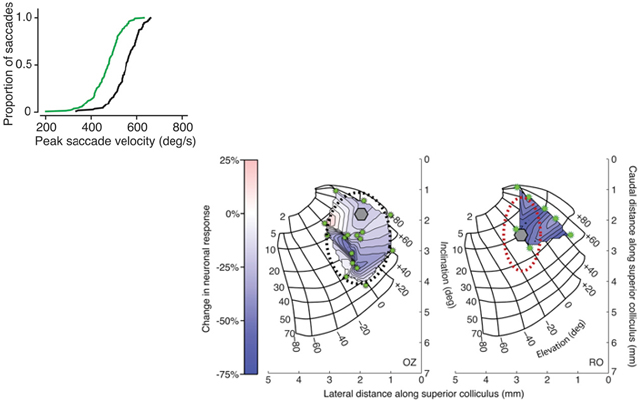Optogenetic Inactivation Modifies Monkey Visuomotor Behavior
[Publisher Link] [Local Copy]
Cavanaugh, J., Monosov, I. E., McAlonan, K., Berman, R. A., Smith, M. K., Cao, V., Wang, K. H., Boyden, E. S., Wurtz, R. H. (2012) Optogenetic Inactivation Modifies Monkey Visuomotor Behavior, Neuron 76:901–907.

A critical technique for understanding how neuronal activity contributes to behavior is determining whether perturbing it changes behavior. The advent of optogenetic techniques allows the immediately reversible alteration of neuronal activity in contrast to chemical approaches lasting minutes to hours. Modification of behavior using optogenetics has had substantial success in rodents but has not been as successful in monkeys. Here, we show how optogenetic inactivation of superior colliculus neurons in awake monkeys leads to clear and repeatable behavioral deficits in the metrics of saccadic eye movements. We used our observations to evaluate principles governing the use of optogenetic techniques in the study of the neuronal bases of behavior in monkeys, particularly how experimental design must address relevant parameters, such as the application of light to subcortical structures, the spread of viral injections, and the extent of neuronal inactivation with light.